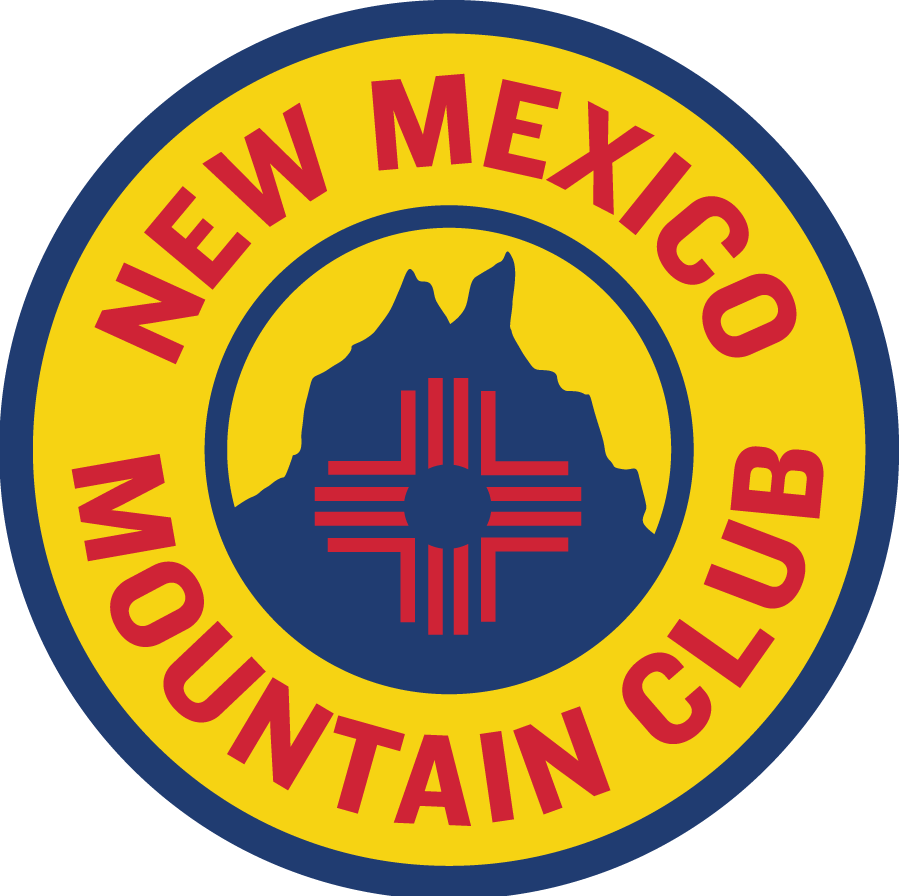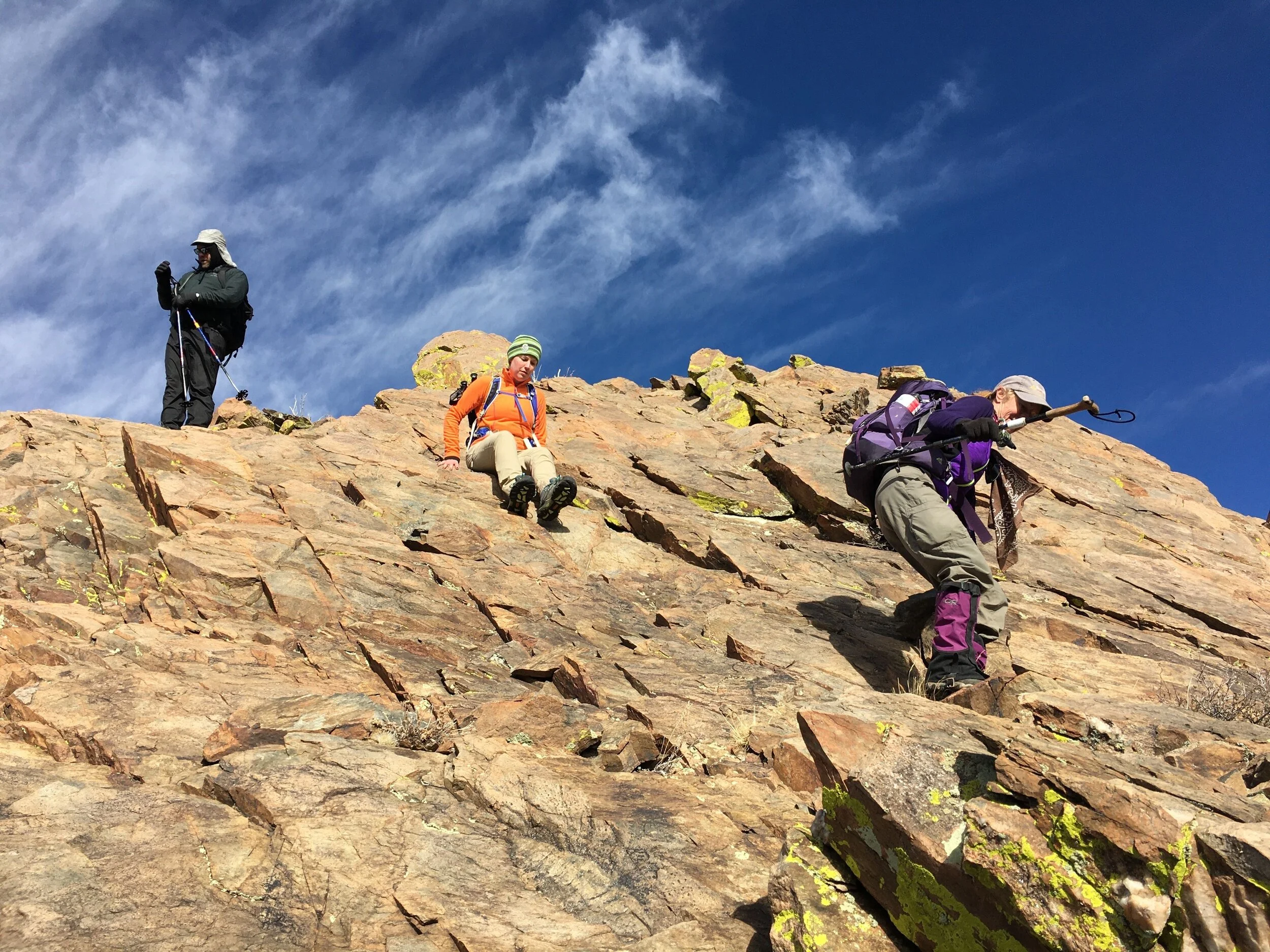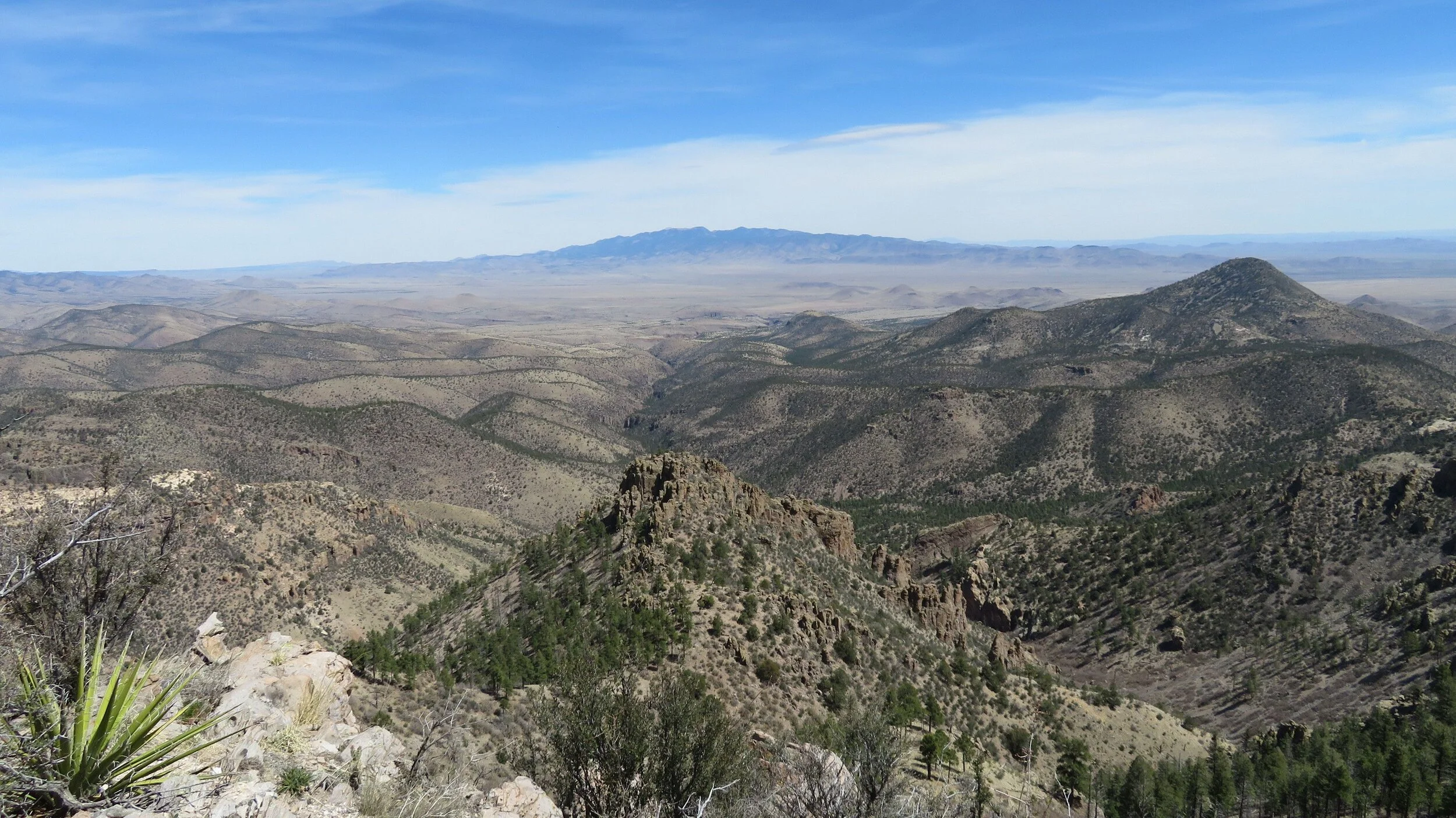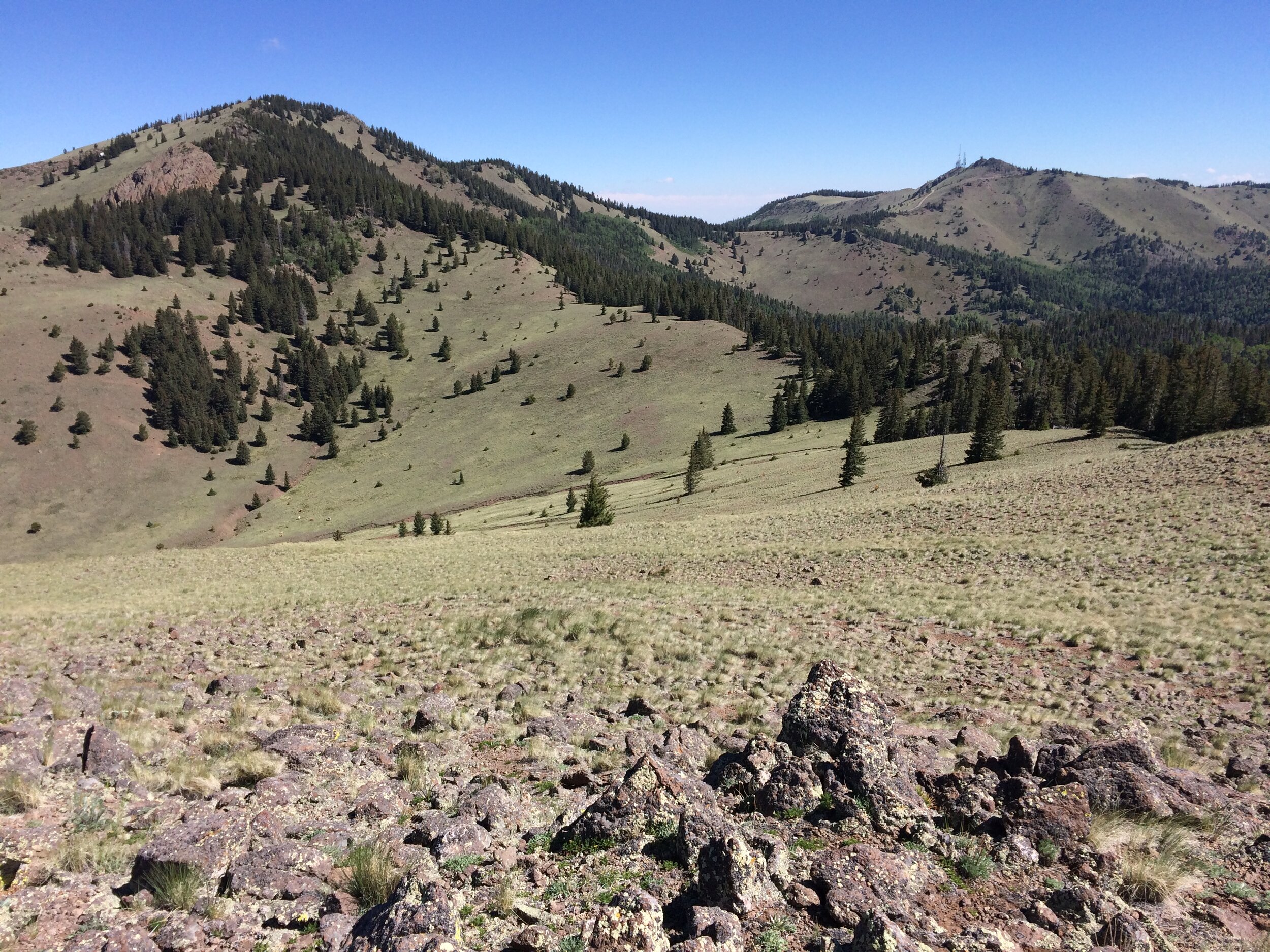Photo: Corey
Hike Leader: Corey Norman
Date: March 26-27
Hike Distance: 14+ miles
Elevation Gain: 2500 ft.
The Aldo Leopold Wilderness encompasses the heart of the Black Range, the north-south trending mountains just east of the Gila Wilderness. Once part of the Gila Wilderness, the Black Range’s designation was removed when a forest road was constructed just below its west side. Later on, much of the range was given back its wilderness designation and named after the famous Aldo Leopold who is so largely responsible for the creation of the Gila Wilderness and one of the earliest vocal wilderness advocates in general. It remains a wild wild place today. Our leader Corey Norman led a car camp over the weekend in the eastern side of the range. Thank you Corey for getting our hikers into this rugged landscape!
Photo: Corey
The Black Range is a place that has enamored me for years. It is remote, vast, rugged, and very rich in its history. It will take dozens of trips to really have any sense of knowing the place, so this weekend was an effort to start chipping away! We drove down Friday evening and set up our camp at a beautiful site tucked in the lower hills of the range. Near an old homestead and surrounded by a spacious pinyon-juniper forest, we were lucky to have such a beautiful camp. There was the occasional cow announcing its displeasure at our presence, but it was largely quiet, save for a couple owls conversing in the dark.
Photo: Corey
On day one we hiked up North Percha Creek. Near our parking spot we noticed water crossing the road, which was a great and unexpected sign! We contoured up on a hillside to bypass the private property down low and then dropped into the canyon. This canyon was one of many that were severely affected by forest fires. As a result, there was significant deadfall and little shade. There are still some stands of live trees, though, and every now and then a reflective sliver of water makes its way to the surface.
Photo: Corey
Partway through the canyon, we came across the remains of an old mining operation. As we explored the place, it sure appeared to be quite a significant operation! There once was a small community called Percha City downstream from here, and I wonder if this mine is one of the reasons for the “city”. The mine entrance was interesting, and the walls and ceiling were impressive as viewed from that entrance. As a reminder, never enter abandoned mines.
Photo: Corey
Farther up the canyon we gained the views of the gorge we were heading toward. The deadfall became more challenging to negotiate until we reached the mouth of the gorge. Upon reaching it, the change was almost instantaneous. The canyon floor cleared, the canyon wren announced its presence, and the canyon walls rose to an impressive height! As we walked through, it was impossible to not feel dwarfed by the enormity and grandeur of the cliffs surrounding us. We noticed some caves in the cliffs up high, but they were very clearly inaccessible without rope. After further poking around, some snack breaks, and just general lazing under the cliffs and sun, we began our hike back. We arrived with plenty of time to enjoy more snacks, conversation, and eventually a filling dinner back at camp.
Photo: Corey
Photo: Corey
On day two, we started our hike up Carbonate Canyon. We started the morning by running into two javelina hunters in the parking lot. They were nice and wanted to get bit of a headstart on us, which was fair enough. Once they were away, we began our journey up the canyon, alongside the flowing stream and through the clouds of juniper pollen. This canyon was much less affected by the aforementioned fires. So, while there were stretches of burn scar, there was much more tree cover as well. There was a much more modern cabin partway up the canyon, associated with mines that we did not find on this trip. As we made our way farther up the canyon, the hike steepened, the deadfall increased, but so did the water! Pools began to form, tiny cascades began to sing, and the canyon more rocky and rugged. At the back end of our hike, we reached our destination…a series of small waterfalls that ended with a 30 footer in a beautiful little gorge. We had lunch by one of the smaller falls that had a nice little pool beneath it that was ice cold!
Photo: Corey
A few of us hiked a short ways up a small tributary by the falls to visit another waterfall that was supposed to be even taller. It was significantly taller, but with significantly less flow. More of a seep than a falls. But, the short jaunt was made worthwhile by the fact that the scrambling through the tributary was top notch!
Photo: Corey
We made quick time back to the cars, where we said goodbye to one another, to the Black Range, and made our way back home. This was an excellent trip into an underrated mountain range, and I am thankful that I had such a great group to experience it with! And kudos if you made it through this whole blog post! I even shortened it and it still turned into a short book, but I hope it encourages ya’ll to come out and experience just what this range and the Aldo Leopold Wilderness are all about.
Photo: Corey












